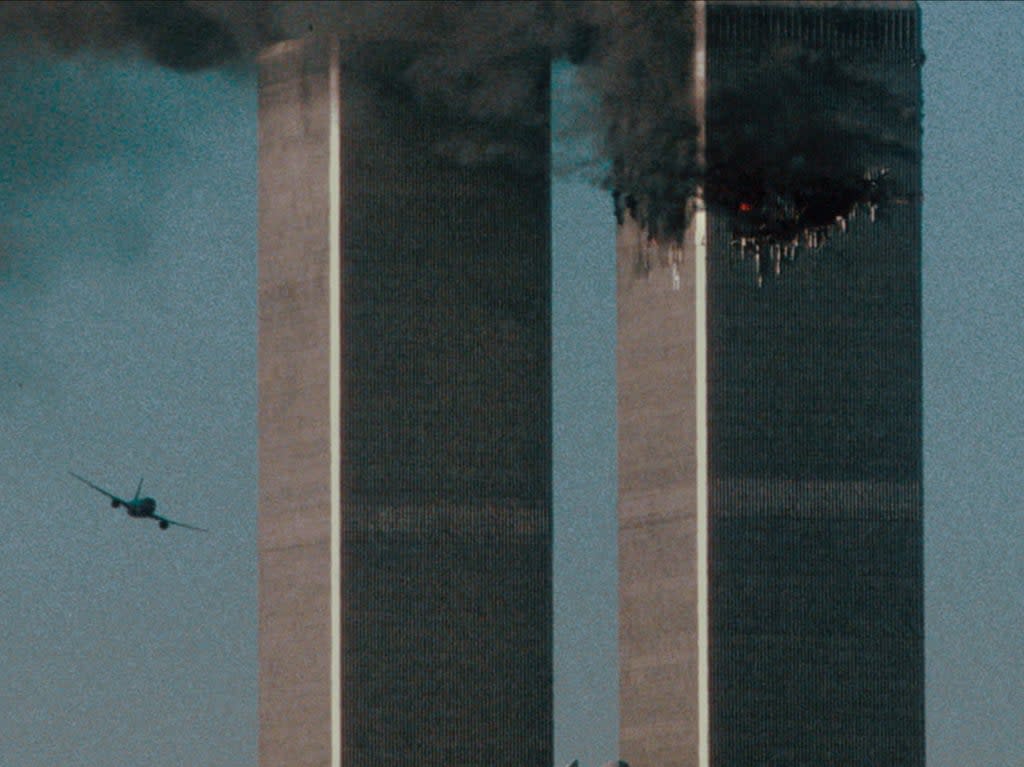Turning Point: 9/11 and the War on Terror review: A timely examination of an atrocity

George W Bush first heard about the 9/11 attacks when he was visiting a school. The US president was reading books to second-grade students when Andrew Card, then the White House Chief of Staff, walked up to him, leaned over and whispered into his ear: “A second plane hit the second tower. America is under attack.”
Card recounts this moment in Turning Point: 9/11 and the War on Terror, a comprehensive new Netflix documentary. The president’s facial expression then – an air of complete dismay – has been immortalised in a famous photo. Watching a clip of the interaction at the same time as Card speaks gives it even more depth. The scene serves as a gripping window into the utter chaos of the day.
It will soon be 20 years since four airplanes were hijacked in a series of terrorist attacks on 11 September 2001, leaving 2,996 people dead. Turning Point is a comprehensive, timely examination of the events, their historical context, and their contemporary implications.
Directed by Brian Knappenberger (whose previous documentaries include the 2012 We Are Legion: The Story of the Hacktivists and the 2014 The Internet’s Own Boy: The Story of Aaron Swartz), Turning Point uses a meandering but clear timeline. It begins in New York City on the morning of Tuesday, 11 September 2001. At 8:46am that day, a first plane hit the North Tower. Seventeen minutes later, at 9:03am, a second place struck the South Tower.
Here, the documentary pauses its progression to travel back in time to 1979 and the Soviet invasion of Afghanistan – a “remarkable turning point in history”. Time is spent examining what made the takeover, and the United States’ support of the Afghan resistance, a defining moment that has shaped foreign relations to this day.
By the end of episode one, we’re back in the US. Episode two focuses in part on American Airlines Flight 77, which crashed into the Pentagon at 9:37am, killing 184 victims. Tributes are also paid to the passengers of United Airlines Flight 93, which crashed into a field in Somerset County, Pennsylvania, after those on board fought the hijackers. The documentary then goes back to New York City. At 9:59am, the South Tower collapsed. At 10:28am, the North Tower fell too.
At this point, the documentary disrupts its own flow once more, going back in time from 12:36pm to 8:55am, when then-George President W Bush first learnt of the attacks. From there, Turning Point delves into what Bush termed the “war on terror”.
It’s a testament to the clarity of the editing that the format works. Far from confusing, it’s an efficient way to examine the minutiae of the events of the day in all their nightmarish practicalities, while fitting them into a larger puzzle. If you are a Millennial now, then you were either a child or a young adult on 9/11. If you’ve read detailed tomes about 9/11, its context, and its aftermath, then Turning Point probably won’t teach you anything you don’t already know. But if you have in any way struggled to make sense of the picture’s many moving parts, then it will serve as an efficient overview.
Knappenberger’s use of archive footage is blunt yet smart. When the first plane hits, we’re not looking at it. Instead, Turning Point uses an excerpt from a local TV station’s live feed. The camera focuses on someone’s shoes; the microphone picks up the roar of a plane engine and an unbelievably loud crash. This is a choice perhaps made out of necessity: there is only one known clear video of the first plane hitting the North Tower, shot by French filmmakers Jules and Gédéon Naudet. But the live feed clip is heart-rending in its own way. If you were on the streets of Manhattan that day, chances are you weren’t looking up at the Twin Towers. Chances are you heard the first plane before you saw it.
Turning Point takes pains to examine America’s post-9/11 rhetoric and sentiment. “In many respects, what I was hearing was revenge,” says Representative Barbara Lee, who also recounts evacuating the Capitol on 11 September after the Pentagon was struck. “It was anger and revenge.” The documentary cuts to a series of man-on-the-street news clips of people detailing their desire for “revenge, I want to get even” and stating that “the enemy’s got to be eradicated”.
With the 20th anniversary of the attacks, Turning Point was always going to be timely. It’s become even more crucial in the aftermath of the US’s withdrawal from Afghanistan and the Taliban’s ensuing takeover.
“It’s important to learn your history,” says Caitlin Langone, the daughter of a police officer who was killed while attempting to rescue the victims trapped in the World Trade Center. “It’s important to know the full scope of what led to 9/11, 9/11 itself, the aftermath. It’s important to know the good, the bad, the ugly, the real.” Turning Point is a good first step towards that goal.
Turning Point: 9/11 and the War on Terror is available on Netflix in the US and in the UK


